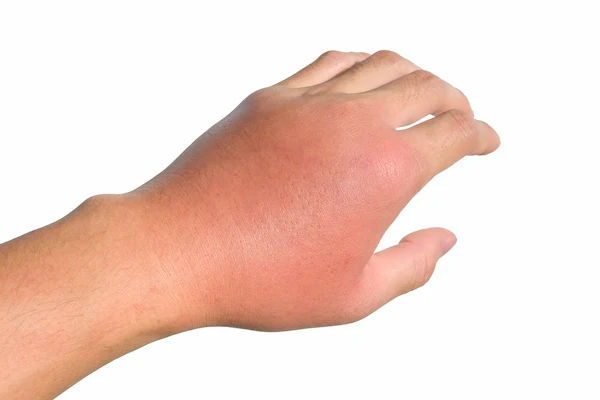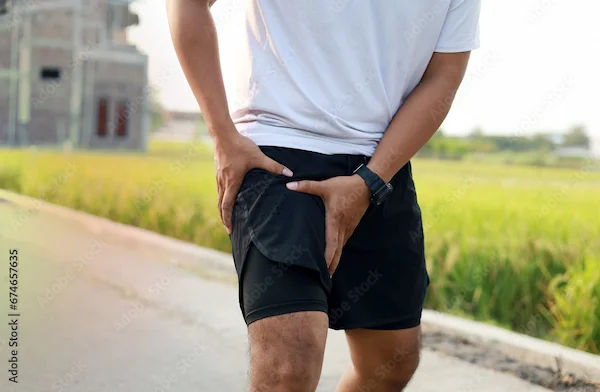Guide to Knee Pain After Replacement
Learn the common causes of knee pain after replacement surgery and discover effective strategies for relief and recovery.

Written by Dr. Dhankecha Mayank Dineshbhai
Reviewed by Dr. J T Hema Pratima MBBS
Last updated on 3rd Oct, 2025

Introduction
Knee replacement surgery is a life-changing procedure for millions, offering freedom from debilitating arthritis pain. However, it's common to experience some level of discomfort during the recovery process. While initial post-surgical pain is expected, what happens when pain persists for months or even returns years later? Understanding the difference between normal healing and a potential problem is crucial. This comprehensive guide delves into the various causes of knee pain after replacement, from common inflammation to rare complications. We'll explore the recovery timeline, identify warning signs that warrant a doctor's visit, and outline both non-surgical and surgical solutions. Our goal is to empower you with the knowledge to navigate your recovery confidently and take the right steps toward lasting relief. If your knee pain after replacement is causing concern, this article will help you understand the possible reasons and guide your next actions.
Understanding the Normal Recovery Timeline
Recovery from a knee replacement isn't linear; it happens in distinct phases. Knowing what to expect can ease anxiety and help you distinguish standard healing from problematic pain.
The First 6 Weeks: Managing Acute Post-Surgical Pain
This initial phase is characterised by significant pain, swelling, and stiffness. The pain is primarily due to the trauma of
surgery: cut bones, stretched ligaments, and soft tissue inflammation. Your medical team will provide a robust pain
management plan, including medications and ice therapy. The focus here is on early mobilisation, managing swelling,
and beginning gentle physical therapy (PT) to restore basic range of motion. It's normal to experience aching after PT
sessions and sharp twinges as the muscles around the knee relearn how to function.
3 Months to 1 Year: The Road to Full Strength
By the three-month mark, the sharpest pain should have subsided. You'll be walking more comfortably, but you may still feel aching, stiffness after periods of inactivity, and discomfort with more strenuous activities. The pain during this phase is often muscular, as the quadriceps, hamstrings, and glutes continue to strengthen. Full recovery, where the knee feels truly integrated and "natural," can take up to a year or even longer for some individuals. Persistent knee replacement pain when walking long distances at this stage is not uncommon and usually improves with continued strengthening.
Consult an Orthopaedic Surgeon for the best advice
When is Knee Pain a Cause for Concern?
While some discomfort is normal, certain symptoms are red flags indicating a potential complication. You should not dismiss these signs.
Red Flag Symptoms You Should Never Ignore
Contact your surgeon immediately if you experience any of the following:
- Severe, escalating pain that isn't relieved by rest, ice, and prescribed medication.
- Signs of infection: These include a fever above 100.4°F (38°C), chills, excessive redness, warmth, tenderness, or pus-like
drainage from the incision site. - Sudden onset of swelling, especially if it's accompanied by calf pain, tenderness, or redness, which could indicate a
blood clot (Deep Vein Thrombosis or DVT). - A "popping" or "grinding" sound followed by a sensation of the knee giving way, which might suggest a mechanical
problem with the implant. - Inability to bear weight or walk on the new joint.
If you experience these red flag symptoms, especially signs of a periprosthetic joint infection or DVT, seeking immediate medical attention is critical.
Common Causes of Persistent Knee Pain After Replacement
When pain continues beyond the expected healing period or returns after a pain-free interval, it's essential to investigate the underlying cause.
Loosening of the Implant
This is a leading cause of pain after knee replacement 1 year later or even further down the line. The implant
components are typically cemented or press-fit into the bone. Over time, the bond between the bone and the implant can weaken, causing the prosthesis to become loose. This often results in pain that starts when you begin walking or put
weight on the knee and may improve with rest. It can feel like a dull ache or a sharp pain deep within the joint. Loosening can be seen on an X-ray.
Infection (Periprosthetic Joint Infection)
An infection around the prosthesis is a serious but relatively uncommon complication. It can occur soon after surgery or even years later if bacteria travel through the bloodstream from another infection in the body. Symptoms are often the red flags mentioned above: persistent warmth, swelling, redness, and drainage. Pain from an infection is typically constant, even at rest. Diagnosis often requires blood tests and a joint aspiration (using a needle to draw fluid from the knee for analysis).
Instability and Ligament Issues
A successful knee replacement requires balanced ligaments for stability. If these ligaments are too tight, too loose, or damaged during surgery, the knee can feel unstable or "give way." This instability places abnormal stress on the joint, leading to pain, particularly when walking on uneven surfaces or going down stairs. This sensation of the knee buckling is a key symptom of instability.
Less Common but Important Causes of Pain
While common causes of pain are often addressed first, some less obvious factors can significantly impact your health and comfort.
Patellofemoral (Kneecap) Complications
The kneecap (patella) is often resurfaced with a plastic button during replacement. Problems in this area can cause
anterior knee pain (pain at the front of the knee), especially when climbing stairs, squatting, or rising from a chair. Issues include patellar maltracking (where the kneecap doesn't glide properly) or wear of the plastic component.
Nerve Damage or Complex Regional Pain Syndrome (CRPS)
During surgery, small nerves around the knee can be damaged, leading to numbness, burning, or sharp pain in the knee after replacement. In rare cases, patients may develop CRPS, a condition characterised by severe, chronic pain that is disproportionate to the original injury. The pain may be accompanied by changes in skin color, temperature, and swelling.
Allergic Reactions to Implant Materials
Though rare, some individuals can have an allergic reaction to metals in the implant, such as nickel, cobalt, or chromium. This can trigger an inflammatory response, causing pain, swelling, and a rash. If a standard implant causes persistent issues, your doctor may investigate the possibility of an implant allergy.
Diagnosing the Source of Your Knee Pain
An accurate diagnosis is the first step toward effective treatment. Your orthopaedic surgeon will use a multi-faceted approach.
The Role of Physical Examination and Patient History
Your doctor will ask detailed questions about your pain: its location, character, what makes it better or worse, and
when it started. They will examine your knee for swelling, tenderness, range of motion, stability, and strength.
Imaging Tests: X-rays, CT Scans, and MRIs
An X-ray is the first imaging test to check for obvious issues like implant loosening, fracture, or component malposition.
If more detail is needed, a CT scan can provide a 3D view of the implant's alignment, while a special MRI protocol can
visualise soft tissues like ligaments and tendons around the metal implant.
Laboratory Tests: Blood Work and Joint Aspiration
Blood tests, such as Erythrocyte Sedimentation Rate (ESR) and C-Reactive Protein (CRP), are inflammatory markers that can screen for infection. The definitive test for a periprosthetic joint infection is a joint aspiration, where fluid from
the knee is analysed for white blood cells and cultured for bacteria. Apollo24|7 offers convenient home collection for these crucial blood tests, making the diagnostic process smoother.
Get Your Health Assessed
Effective Treatment Strategies for Post-Replacement Pain
Treatment is entirely dependent on the underlying cause.
Non-Surgical Interventions: PT, Medications, and Injections
For many issues like muscular weakness, mild inflammation, or soft tissue irritation, non-surgical methods are the first line of defence.
- Physical Therapy: A tailored PT program is essential for strengthening the muscles that support the knee, improving
flexibility, and correcting gait problems. - Medications: Anti-inflammatory drugs (NSAIDs) can help manage pain and swelling.
- Injections: Corticosteroid injections can provide powerful short-term relief for inflammation, while hyaluronic acid
injections are sometimes used, though their effectiveness after replacement is debated.
When Revision Surgery Might Be Necessary
If non-surgical treatments fail and the cause is a mechanical problem with the implant, revision knee replacement
surgery may be recommended. This is a more complex procedure than the initial replacement and involves removing the old implant and replacing it with a new one. It is typically considered for confirmed cases of loosening, infection, instability, or significant wear.
Lifestyle and Home Management Tips
Simple lifestyle changes and home care strategies can make a big difference in managing your health and improving daily comfort.
Safe Exercises to Strengthen the Knee
Low-impact exercises are your best friend. Swimming, cycling, and using an elliptical machine build strength without jarring the joint. Focus on exercises prescribed by your physiotherapist, such as straight leg raises, heel slides, and gentle stretching.
Weight Management and Its Impact on Your New Joint
Every pound of body weight translates to several pounds of pressure on your knee joint. Maintaining a healthy weight is one of the most effective ways to reduce stress on the implant, minimise pain, and extend its lifespan.
Conclusion: Taking Control of Your Recovery
Experiencing knee pain after a replacement can be disheartening, but it's important to remember that you are not without options. While the journey to a pain-free life isn't always straightforward, understanding the potential causes empowers you to have an informed conversation with your healthcare provider. From the normal aches of healing to the more complex issues requiring intervention, a proper diagnosis is the cornerstone of effective treatment. Listen to your body, adhere to your rehabilitation program, and never hesitate to seek professional advice when pain seems abnormal or persistent. By partnering closely with your orthopaedic team, you can identify the root of the problem and embark on the correct path to regain the mobility and comfort you sought from the surgery in the first place.
Consult an Orthopaedic Surgeon for the best advice
Consult an Orthopaedic Surgeon for the best advice

Dr Hemanth Praveen Malla
Orthopaedician
8 Years • MBBS ( ANDHRA MEDICAL COLLEGE) Internship(King George Hospital) DNB ORTHOPEDICS( DDH – NBE) FIJR ( ZIMMER) FIJR (NTRUHS- BIRRDS) MNAMS MBBS,DNB (ORTHOPEDIC),FIJR(BIRRDS),FIJR( ROBOTICS),MNAMS . ORTHOPEDIC AND ROBOTIC JOINT REPLACEMENT SURGEON
Chinagadila
Apollo Hospitals Health City Unit, Chinagadila

Dr Himanshu Bhargava
Orthopaedician
11 Years • MS orthopaedics
Delhi
Apollo Hospitals Indraprastha, Delhi

Dr. Saikiran Gudala
Orthopaedician
9 Years • (MBBS) , (M.S.Orthopaedics) FIJR, FIAS
Hyderabad
Apollo Hospitals Jubilee Hills, Hyderabad

Dr. Gouri Shankar Asati
Orthopaedician
20 Years • MBBS, MS
Bilaspur
Apollo Hospitals Seepat Road, Bilaspur
(50+ Patients)

Dr. Praveen Govardhan
Orthopaedician
8 Years • MBBS, MS (Ortho), DNB (Ortho), FASM (S.Korea), FIJR(USA, Ireland, Germany)
Chennai
Apollo First Med Hospitals P H Road, Chennai
Consult an Orthopaedic Surgeon for the best advice

Dr Hemanth Praveen Malla
Orthopaedician
8 Years • MBBS ( ANDHRA MEDICAL COLLEGE) Internship(King George Hospital) DNB ORTHOPEDICS( DDH – NBE) FIJR ( ZIMMER) FIJR (NTRUHS- BIRRDS) MNAMS MBBS,DNB (ORTHOPEDIC),FIJR(BIRRDS),FIJR( ROBOTICS),MNAMS . ORTHOPEDIC AND ROBOTIC JOINT REPLACEMENT SURGEON
Chinagadila
Apollo Hospitals Health City Unit, Chinagadila

Dr Himanshu Bhargava
Orthopaedician
11 Years • MS orthopaedics
Delhi
Apollo Hospitals Indraprastha, Delhi

Dr. Saikiran Gudala
Orthopaedician
9 Years • (MBBS) , (M.S.Orthopaedics) FIJR, FIAS
Hyderabad
Apollo Hospitals Jubilee Hills, Hyderabad

Dr. Gouri Shankar Asati
Orthopaedician
20 Years • MBBS, MS
Bilaspur
Apollo Hospitals Seepat Road, Bilaspur
(50+ Patients)

Dr. Praveen Govardhan
Orthopaedician
8 Years • MBBS, MS (Ortho), DNB (Ortho), FASM (S.Korea), FIJR(USA, Ireland, Germany)
Chennai
Apollo First Med Hospitals P H Road, Chennai
More articles from General Medical Consultation
Frequently Asked Questions
1. Is it normal to have a sharp stabbing pain on the inside of my knee 4 months after replacement?
A sharp, localised pain could indicate several things. It might be a stitch working its way out, irritation of a small nerve, or a problem with the implant component on that side of the knee. While some twinges are normal during healing, a consistent, stabbing pain should be evaluated by your surgeon to rule out issues like component loosening or a pes anserine bursitis (inflammation of a fluid-filled sac near the knee).
2. Why does my knee still get stiff and achy when the weather changes?
This is a very common complaint, even with an artificial joint. While the metal and plastic components themselves don't feel pain, the surrounding tissues, including capsules, ligaments, and scar tissue, can be sensitive to changes in barometric pressure. These tissues expand and contract slightly with pressure changes, which can lead to feelings of stiffness and aching.
3. What does it mean if my knee feels warm to the touch several weeks after surgery?
Some warmth is normal in the first few weeks due to inflammation. However, if the warmth persists beyond 3-4 weeks, is significant, or is accompanied by increased redness, swelling, or pain, it could be a sign of an infection. You should contact your surgeon for an assessment.
4. Can a knee replacement wear out?
Yes, knee implants are mechanical devices and can wear out over time, typically after 15-20 years or more. Wear of the plastic spacer between the metal components can generate tiny particles that cause inflammation and potentially lead to loosening (osteolysis). This is a common reason for pain after knee replacement 1 year later or even decades later, necessitating revision surgery.
5. I hear a clicking sound in my new knee. Is this a problem?
A soft, painless click is usually normal and is caused by the artificial surfaces of the implant moving against each other. However, if the clicking is loud, painful, or associated with a catching or locking sensation, it could indicate a problem with the implant, such as instability or a loose piece of debris, and should be checked.

 (1).webp)



